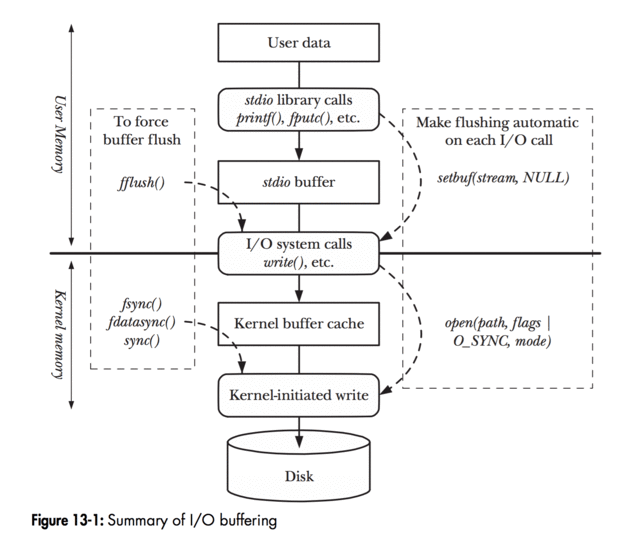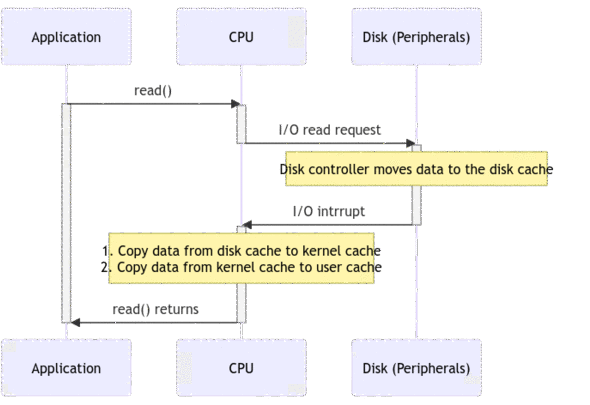A brief note on how I/O in Linux is buffered and how DMA frees the CPU from one phase of data copying.
I/O buffering
In Linux, standard I/O is buffered in both user space and kernel space. Here is a good summary from the book The Linux Programming Interface.

Reads and writes with the stdio library are firstly buffered in the stdio buffer.
Eventually the system calls read() and write() are called to let the kernel handle the I/O requests.
There is also a Kernel buffer cache between the system calls and read disk operations.
There are Page cache and Buffer cache in Linux and they are fused together now.
Page cache is mainly for file I/O which, like it's name suggests,
is based on virtual memory pages.
Buffer cache comes before the virtual memory technology and is based on the disk I/O unit block.
Direct memory access (DMA)
User application relies on the kernel to read from or write to the disk,
and data is buffered in different layers.
A typical read() call with only CPU looks like this:

It is a waste of CPU time to let it busy on copying data around, and that's why we have a hardware DMA.

DMA frees the CPU from handling data moving from hardware buffer to kernel buffer, but CPU is still needed to move data from kernel space to the application memory.
